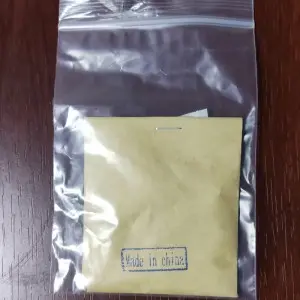Pear pollen is a natural, nutrient-rich product derived from the male flowers of pear trees, offering a range of health benefits. Known for its high concentrations of vitamins, minerals, amino acids, and antioxidants, pear pollen has been used for centuries in traditional medicine to enhance overall wellness. It is particularly valued for its potential to support immune function, improve energy levels, and promote hormonal balance. Packed with natural bioactive compounds, pear pollen is believed to have anti-inflammatory properties, which may help reduce oxidative stress and support a healthy inflammatory response. The pollen is collected during the blooming season and processed with care to preserve its potent nutrients, making it an ideal addition to supplements, smoothies, or health drinks. Additionally, pear pollen is often used in skincare products for its nourishing and rejuvenating effects, contributing to healthier, more radiant skin. With its delicate yet powerful properties, pear pollen offers a natural, holistic way to boost vitality, improve immune resilience, and support a healthy lifestyle. Its versatility and nutrient profile make it a valuable component in the growing trend of plant-based wellness and natural health products.
The Role of Pear Pollen in Fruit Production: Enhancing Pollination for Higher Yields
Pear pollen plays a crucial role in the successful pollination and fruit production of pear trees. As a primary component in the fertilization process, pear pollen is essential for ensuring that flowers are properly pollinated, resulting in higher yields and better-quality fruit. Unlike some plants that rely on self-pollination, pear trees typically require cross-pollination, which means that pollen from one tree must be transferred to the flowers of another. This is where pear pollen becomes critical.
When bees and other pollinators collect and transfer pear pollen from one blossom to another, they enable fertilization, which triggers fruit development. Without effective pollination, pears will not form, leading to reduced harvests or even complete crop failure. The quality of the fruit is also directly influenced by the efficiency of the pollination process. Proper fertilization leads to uniform growth, optimal size, and better taste, ensuring that the harvested pears meet market standards.
The timing of pollen release is another factor that impacts the effectiveness of pear pollination. Pear trees typically bloom in spring, and the synchronization of pollen availability with the peak blooming period is vital for successful fertilization. Farmers can enhance pollination rates by choosing compatible pear varieties that flower simultaneously, ensuring that abundant pollen is available for cross-pollination.
The Science of Pollination: Understanding How Pear Pollen Affects Tree Fertility
Pollination is a vital process in the reproductive cycle of pear trees, with pear pollen playing a central role in tree fertility. For a pear tree to produce fruit, its flowers must undergo fertilization, which is achieved through the transfer of pollen from one flower to another. This process is highly dependent on both the quantity and quality of pear pollen, as well as the activity of pollinators like bees, wind, and insects.
Unlike self-pollinating plants, pear trees typically require cross-pollination. This means that pollen from one tree must be transferred to the flowers of a different, compatible variety for fertilization to occur. Pear pollen contains male gametes, which must fertilize the ovules (female gametes) in the flowers to form seeds and initiate fruit development. If the pollen quality is poor or if there is insufficient pollen transfer, the chances of fertilization are greatly reduced, leading to a lack of fruit or poor-quality pears.
The success of pollination is influenced by several factors, including the timing of pollen release. Pear trees typically bloom in early spring, and the release of pollen must align with the flowering period of neighboring trees to maximize cross-pollination. Additionally, environmental conditions such as temperature, humidity, and the presence of pollinators can either enhance or hinder the pollination process.

